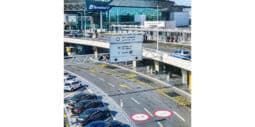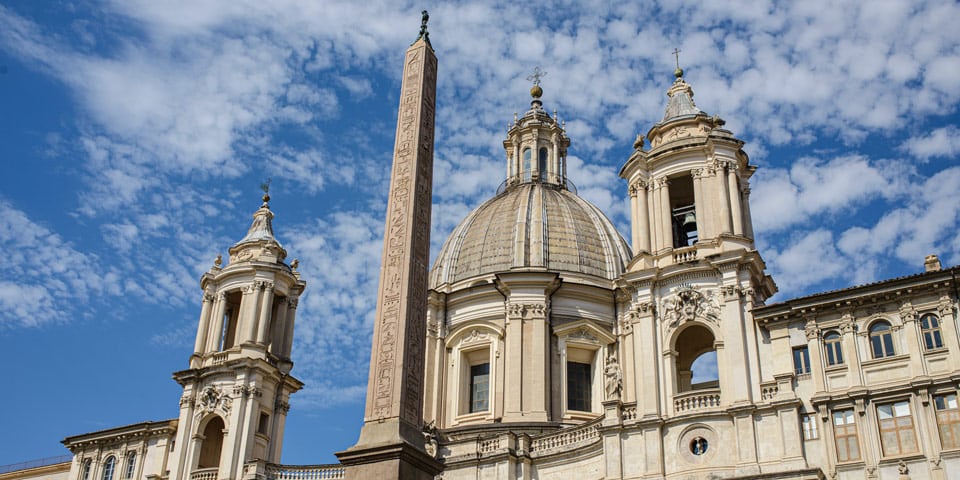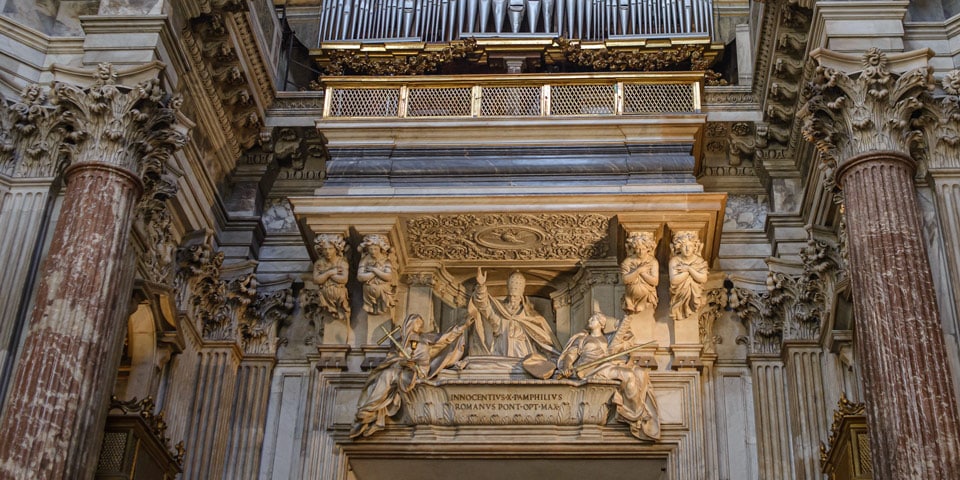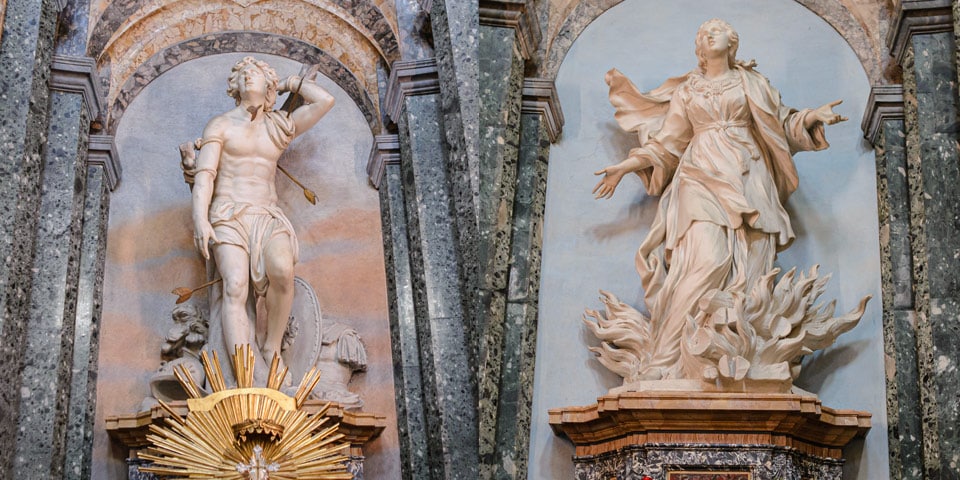

24803 views

| Opening Hours |
Sunday:
- ,
-
Tuesday:
- ,
-
Wednesday:
- ,
-
Thursday:
- ,
-
Friday:
- ,
-
Saturday:
- ,
-
|
|---|---|
| Recommended tour | |
| Closest bus stops |
|
| Closest subway stations | |
| Address | Via di Santa Maria dell'Anima, 30/A, Roma |
| Website | santagneseinagone.org |
Sant’Agnese in Agone, or Saint Agnes in Agony, stands as a captivating marvel in the heart of Rome, epitomizing Baroque grandeur.
This iconic church, officially named after Saint Agnes, reflects the artistic brilliance of the era, boasting intricate architecture and a rich historical tapestry. Nestled in the famous Piazza Navona, Sant’Agnese in Agone invites visitors to delve into its captivating beauty, revealing stories of faith, architectural prowess, and the enduring legacy of Baroque art in the Eternal City.
Contents
ToggleSant’Agnese in Agone is a Baroque masterpiece dedicated to Saint Agnes. Commissioned by Pope Innocent X Pamphili and designed by architects Girolamo Rainaldi and his son Carlo Rainaldi, construction began in 1652, marking the culmination of a vision to honor the young martyr. The church stands on the reputed site of Agnes’ martyrdom, contributing to its profound spiritual significance.
Completed in 1670, Sant’Agnese in Agone boasts a striking façade designed by the acclaimed sculptor and architect Gian Lorenzo Bernini. The intricately detailed sculpture of Saint Agnes herself, placed at the center, is a testament to Bernini’s unparalleled skill. The church’s interior, adorned with impressive frescoes and marble detailing, further exemplifies the grandeur of Roman Baroque architecture.
Read also about the masterpieces of Borromini in Rome.
One of the most captivating features of Sant’Agnese in Agone lies beneath its sacred grounds — the crypts. Accessible to visitors, the crypts house the mortal remains of Saint Agnes, stored within a beautifully adorned sarcophagus. Pilgrims and art enthusiasts are drawn to these underground chambers, where the spiritual and historical dimensions intertwine.
Beneath the main altar lies the second crypt, the “Chapel of St. Agnes.” Here, visitors encounter an enchanting chamber adorned with precious marble and adorned with sculptures, creating a serene atmosphere for prayer and reflection.
This sacred space serves as a poignant reminder of Saint Agnes’ enduring legacy and the rich history embedded in the depths of Sant’Agnese in Agone.
Sant’Agnese in Agone is a baroque masterpiece revealing layers of history and spirituality. Here’s what to look for inside:



Author: Kate Zusmann
This website uses cookies. For more info read the cookies policy
Rome.us © 2025. Created with love by Roman experts and guides.